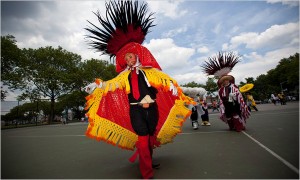
Here is a story that crosses race, culture, history and all knowing of who we think we are.
Jennifer Teege grew up in a foster home as a child. As an adult she begins to explore the history of where she comes from…her biological parents background. Not talking about her family story created internal turmoil that led to depression.
“You think that if you don’t talk about something, then it won’t have any impact on you. But in my case the silence had a destructive effect,” she said.
She begins to explore her story as she writes this book, and finds that storytelling can be healing.
“Your origin is decisive in your own identity, and every person needs to feel their own identity,” Teege said. So far she has focused on her German family history but in the future she wants to get to know Africa and travel to Nigeria – the home of her biological father.
http://www.dw.de/my-grandfather-would-have-shot-me/a-17109468
“I am not a reflection of this part of my family story but I am still very connected to it. I try to find a way to integrate it into my life.
It is a story that is very unique and very unusual, and a story that has a deeper meaning. It is more about the universal question of how to deal with the weight of the past on the present – and it should show that it is possible to gain personal freedom from the past.”
http://www.bbc.co.uk/news/magazine-24347798
Living a life of multiplicity often presents the finding of ‘skeletons in the closet.’ Teege provides some guidance on how to gracefully put our past in its rightful place and not let it overshadow our life.
Check out the above links to more information about her story!






